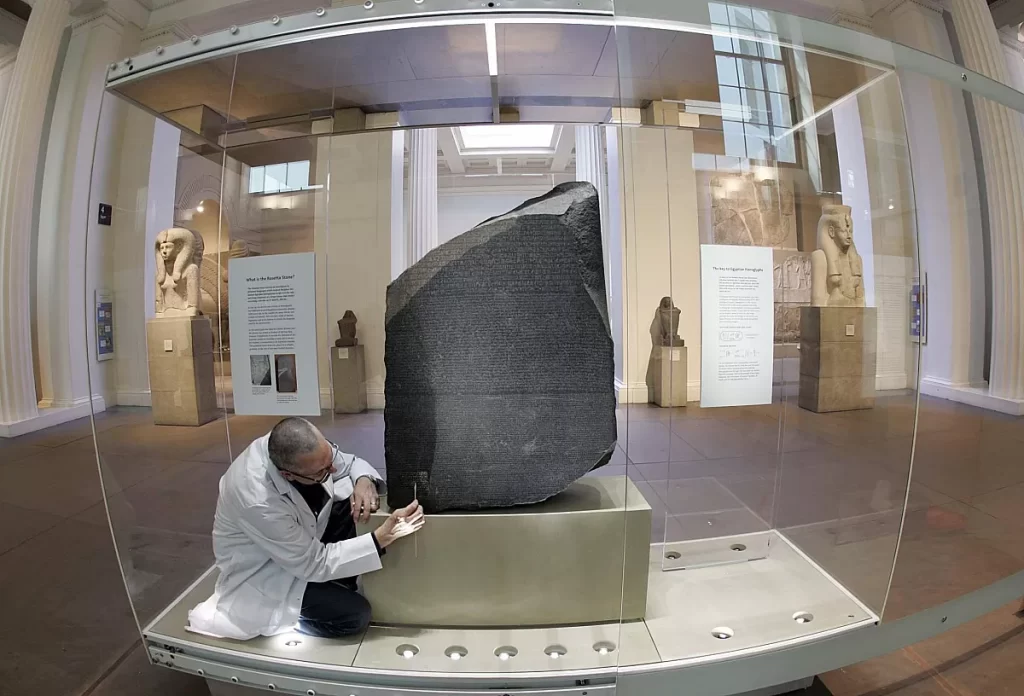Decoding Egyptian Hieroglyphics

The Egyptian Hieroglyphics have always been one of the most popular codes to decipher. The ancient language exudes an air of mystery, representing the astonishing artistic and technological accomplishments of Egyptians. The Egyptian Empire, one of the longest dynasties in human history, had used hieroglyphics from 3200 BC to 500 AD, the knowledge of how to read its characteristic writing style was completely lost after the empire’s dissolution in the 5th century.
Since then, people have been eager to decode this mysterious language, and it took until the 19th century for their questions to be answered. In 1799, Napoleon’s troops discovered the Rosetta Stone. It was carved with a decree establishing the rule of King Ptolemy V in 196 BC. Interestingly, the decree was carved in three languages: Egyptian Hieroglyphics, Demotic, and Ancient Greek.
The translation in Ancient Greek is very significant, as it was a language that many historians and linguists were already familiar with at the time. Hence, with an Ancient Greek translation directly underneath examples of Demotic and hieroglyphics, there was theoretically everything in place to translate the mysterious Egyptian languages.
The stone was brought to the British Museum, and various universities competed to translate the hieroglyphics.
Swedish scholar Johan David Åkerblad and French Orientalist Antoine-Isaac Silvestre de Sacy made the first great discoveries, deciphering the Greek names in the Demotic script. From there they started work on a Demotic alphabet.
After that, British Egyptologist Thomas Young was able to deduce the phonetic hieroglyphic characters describing the same Greek names, managing to decode the name Ptolemy written as “p t o l m e s”. He continued to decode other similarities in the scripts, proving that the Demotic and hieroglyphics were versions of the same text.
Furthermore, French scholar Jean-François Champollion identified Cleopatra’s name in the text and deduced that hieroglyphics were phonetic. Champollion helped decode and establish that hieroglyphics contained a combination of phonetic and logogram readings.
Champollion released his initial work on hieroglyphics on this day in 1822 alongside a lecture at the Académie royale des Inscriptions et Belles-Lettres.
